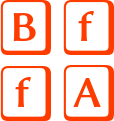Flash fiction refers to stories 1000 words and under. This very short form has been growing in popularity since the 1980s gathering many names along the way. Some examples are: sudden, micro, nano, smoke-long, skinny, hint fiction and for tiny stories of 100 words and 50 words respectively – drabble and dribble.
In the article The Remarkable Reinvention of Very Short Fiction, Robert Shapard gives some history and possible explanations for this expanding surge of interest. One suggestion is that these days, readers love to be able to read short pieces on phones, tablets and other devices, then forward them to friends.
Attempting to define what flash fiction is, Shapard includes the following metaphor by Luisa Valenzuela:
“I usually compare the novel to a mammal, be it wild as a tiger or tame as a cow; the short story to a bird or a fish; the microstory to an insect (iridescent in the best cases).”
The comparison works for us. Writers and readers say, despite the brevity of flash fictions, the best echo long after reading. To sight an Emperor Dragonfly is a wondrous event. If we can get close to one, even for a moment while it hovers on a leaf, it’s even better – the memory, with its myriad of connections and sensory impact will stay for years.
